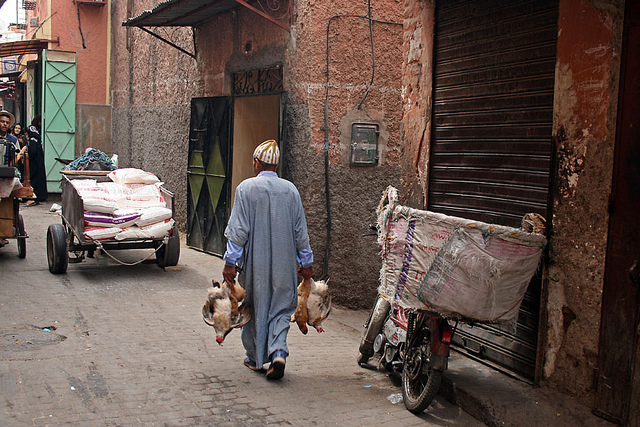Mimouna, the traditional festival celebrated by North African Jews on the last day of Passover, is often overlooked when discussing the Jewish holiday of liberation. Here are 10 things you might not know about the celebration that once brought Jews and Muslims together.
By Ophir Toubul

1. The name of the holiday, “Mimouna,” has several different, fascinating meanings. The most famous of them attribute the name to the Hebrew word “emuna” (belief), the death of the preeminent medieval Sephardic Jewish philosopher, Rambam (“Maimonides”) or the name of the Berber goddess of luck (“Mimouna”). A less popular explanation ascribes the name of the holiday to the city of Tamimouna near Sudan, from which many Jews came to the Tafilalt region in southern Morocco. During the Passover Seder, alongside the prayer for “next year in Jerusalem,” it was customary to pray for a return to Tafilalt. Does this mean we are actually Sudanese?
2. Mimouna symbolized North Africa, and specifically the close relations between Jews and Muslims there. In many places it was the Muslims who brought wheat, milk and butter to the Jews at the end of the holiday so they could make food. Jews in Morocco were viweed as ones who blessed the land for the entire year, and the Muslims saw the holiday as an opportunity to pay back their Jewish neighbors. In the city of Azemmour, Muslims allowed the Jews to use their fields and gardens for the entire day, out of a belief that the Jews would bless the land and leave it fertile.
3. An exceptional story on this topic can be found in the book “Zachur L’Avraham.” It describes how in the city Fes, the gates to the mellah (Jewish quarter) were locked by the police, and entrance to Muslims was forbidden. A Jew who wanted to invite his Muslim friend for Mimouna was forced to go to the police station and leave both their identification cards there until the end of the visit.
4. There is no one way to celebrate Mimouna. There are communities who make mofletta (a traditional pancake served during the holiday) and there are those who do not. There are places where Mimouna was celebrated at home, there were Jewish cities where the streets were filled with celebrations and in other places Jews celebrated in the fields and gardens. The main idea behind the holiday is the celebration of spring and summer — to go out into nature and pray that the rest of the year brings good luck.
5. In the city of Ouazzane it was said that Mimouna celebrations ended in the early hours of the morning. After the guests had left, the entire Jewish community would gather together and march, accompanied by drumming and dancing, toward the city spring, located in the heart of the Arab neighborhood. This celebration was welcomed by the Muslims neighbors (despite the noise), and even the mayor would come out to bless the Jews.
6. One of Mimouna’s defining characteristics was the open houses and the visits to the homes of strangers. It was tradition to visit several celebrations on the eve of Mimouna, drink a cup of tea, taste the mofletta and move on to the next house. The atmosphere was perfect for matchmaking, as well as for a groom to visit his bride’s family. The book “Jews of the Maghreb” describes a tradition by the Jews of Rabat, according to which the groom would come to his bride’s home accompanied by his parents, bearing honey, butter, milk, jewelry and gifts. Once he arrives, his and his bride’s hands are dipped into the honey, milk and butter. The ceremony, however, has one stipulation: it must be led by happy men who have never been divorced.
7. On the eve of Mimouna, it was customary not to eat meat — only dairy products and fish, which symbolize abundance and festiveness. In the city Tétouan it was customary to put a bowl with a live fish on the table. A sign of luck, of course.
8. It turns out that the Baba Sali (a leading Moroccan Sephardic rabbi and kabbalist who was renowned for his alleged ability to work miracles through prayers) didn’t attribute much importance to Mimouna. He offered his guests little more than dates, nuts, almonds and Arak. Many other rabbis boycotted Mimouna celebrations for many years, due to the “looseness” of the events.
8. It turns out that Jewish communities outside of North Africa would also celebrate the end of Passover with similar traditions: the Iraqis customarily went out into nature and took a dip in the Tigris. The Persians also went out into nature. In Egypt, Israel and Turkey, the Jews celebrated the opening of a new year.
10. The piyut (Jewish liturgical poem) “Atem Yotze’i Ma’arav” is a beautifully documented by Rabbi David Buzaglo, who describes the tangible feeling of human brotherhood on this special holiday:
Bonus track
Former President Shimon Peres tries to find himself during a Mimouna celebration, and another 15 minutes of general embarrassment:

